First time in Berlin (second part)
Meeting the contemporary art
After visiting the Brandenburg Tor, the second important destination on my list was The Hamburger Bahnhof museum, a contemporary art museum. Using Google Maps, for sure, I started walking from The Unter den Linden Boulevard to the location of the museum.
Soon, I stumbled across a quarter with modern architecture which looked much more different then what I’ve been seeing until that moment in the city. The buildings were pretty tall and made out of glass having a futuristic aspect and being placed on the banks of The River Spree.
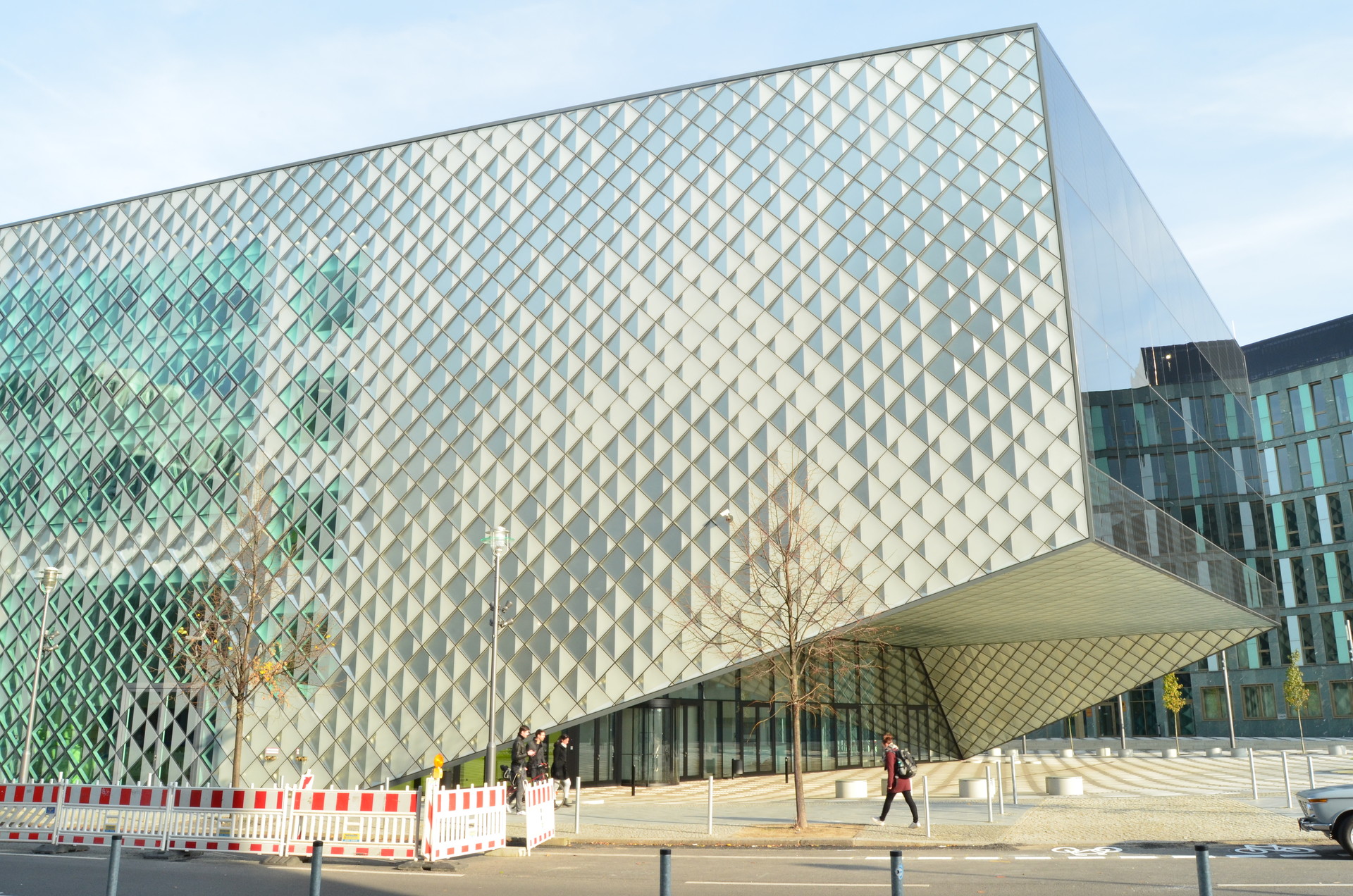
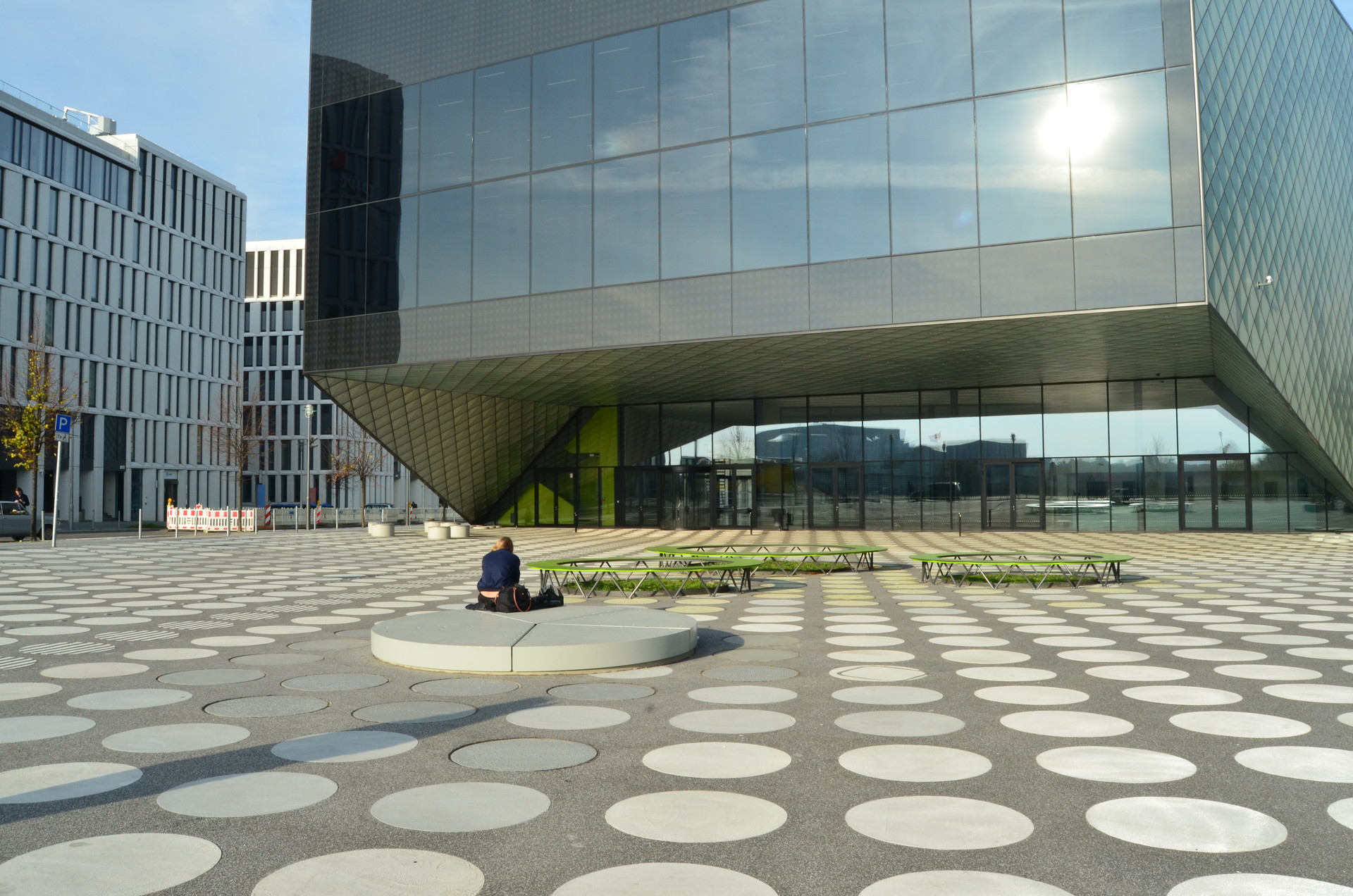
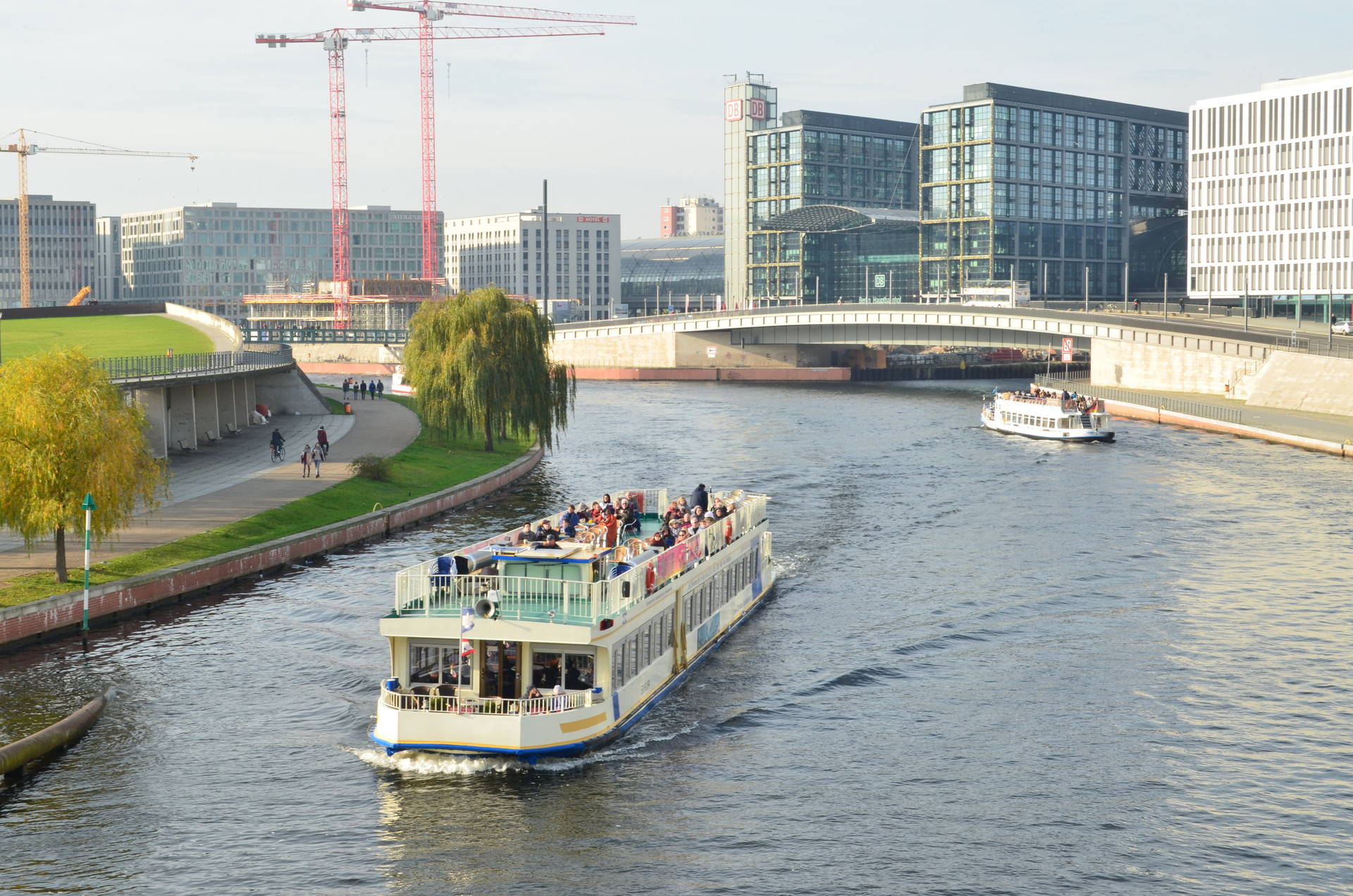
Where was the Hamburger Bahnhof Museum für Gegenwart located?
It took me 30 minutes to get to the museum but that’s because my eyes were often caught either by a corner of a street or by the landscape from a distance. I arrived in the Moabit district on the Invalidenstrasse street where The Hamburger Bahnhof was located.
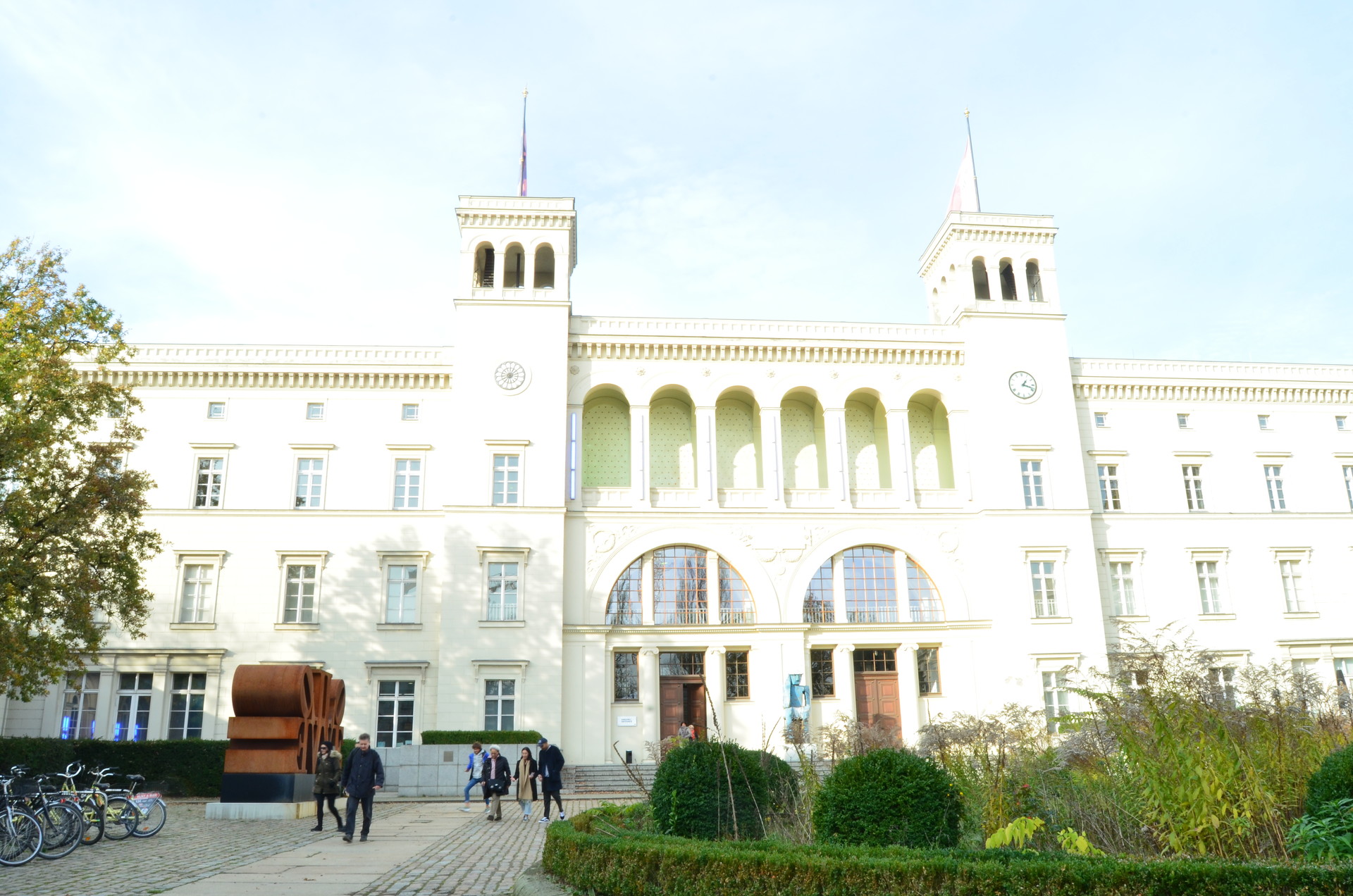
When is the museum open and how much it cost me a ticket?
Generally, the museum is open from Tuesday to Sunday from 10:00 to 18:00, except for weekends when the museum opens at 11:00. Every first Thursday of the month, from 14:00 to 20:00, free entry, in the rest of the time visiting Hamburger Bahnhof + the temporary exhibitions the price of the ticket is 14, 00 euros.
For me, if I remember well, that was the first time when I had to pay the full entrance of an art museum because normally all of the other museums I visited offered students or people under the age of 26 years a free admission or a reduction of the ticket. Anyway, I paid without any constraint for a full ticket.
Short history of the museum’s building
In the german language, “bahnhof” means train station. The name of the museum it is connected to the original function of the building, more precisely, the construction used to serve in the 19th century as terminus of the railway line between Hamburg and Berlin. Today it is preserved as the city’s only train station remaining from that period.
Looking at the outside view of the building, I noticed that the style of it belongs to the Neoclassical aesthetics with white clear walls and specific architectural elements like the semicircular arch and the rows of symmetrical windows that rhythm the entire main facade.
As far as I understood, in 1996, the year when I was born, The Hamburger Bahnhof became a museum of contemporary art being named “Hamburger Bahnhof - Museum für Gegenwart” and housing since then a comprehensive collection of contemporary art. There are exhibited permanent collections which include artworks belonging to famous artists such as Joseph Beuys, Anselm Kiefer, Robert Rauschenberg or Andy Warhol and also temporary displays.
My experience through the museum and encountering some of my favorite artists
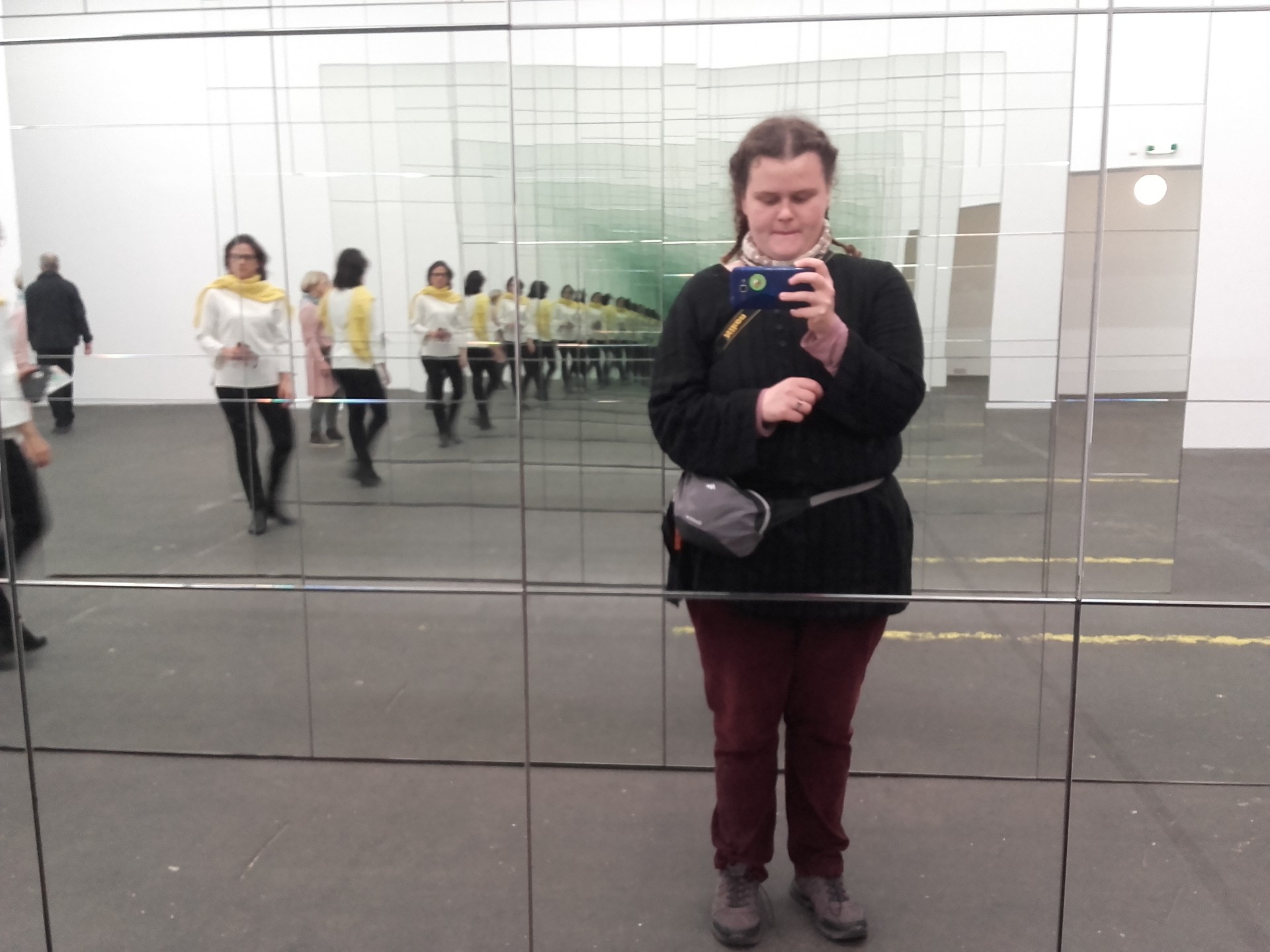
A part of the museum where I spent quite a long time was the rooms exhibiting the most influential and well-known artists in the history of art. I’ve been learning about these artists since high school and finally the moment to see their works with my own eyes happened. The experience to acknowledge the paintings was for sure far more different and profound then to only look at the them in art history books or on the Internet.
Anselm Kiefer’s heavy paintings and creations
Among these, one of them was the german neoexpressionist painter Anselm Kieferwhose works and style I knew and appreciate since before. So, I was very excited and happy for the opportunity of getting to admire directly paintings created by him.
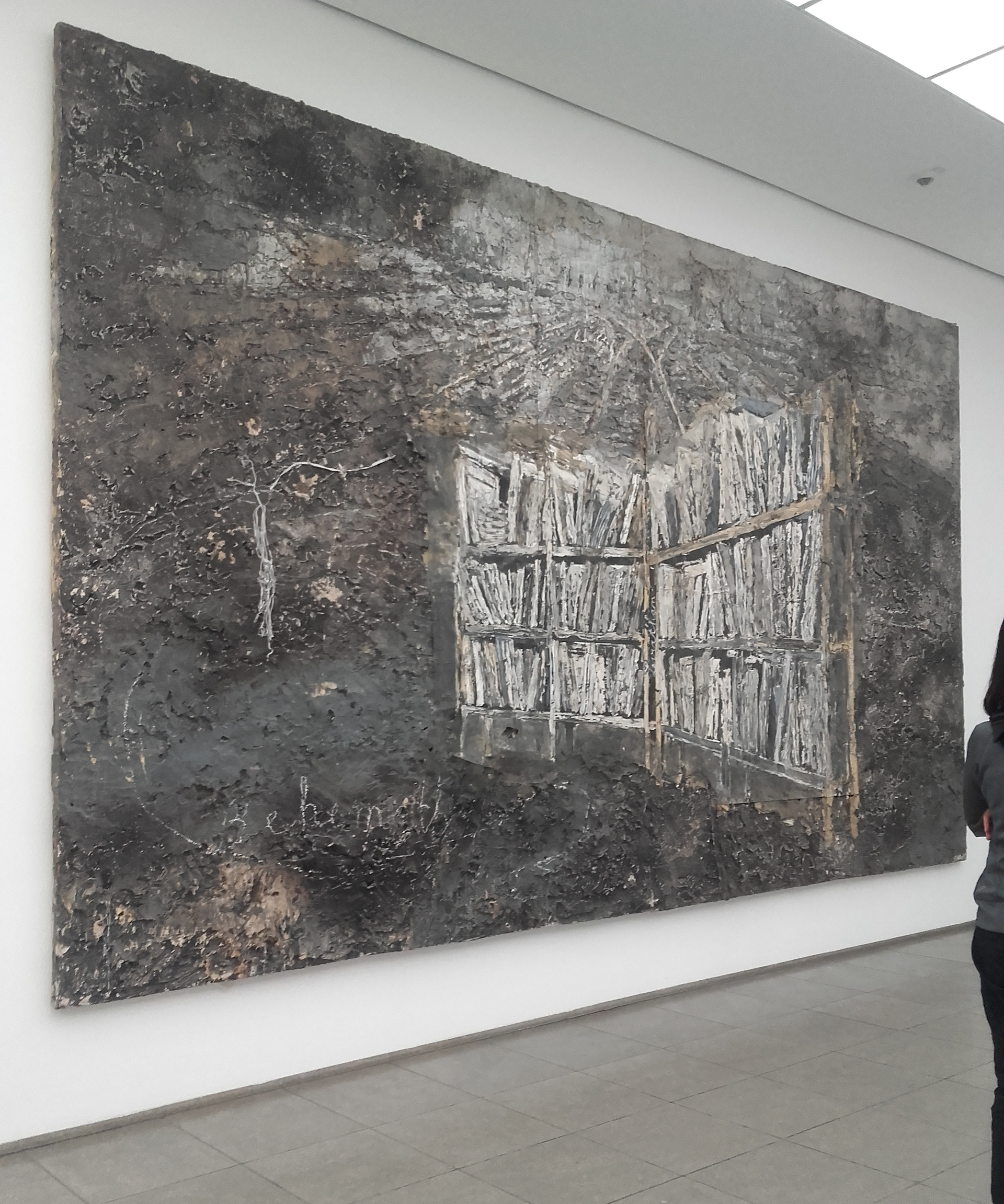
His paintings impressed me due to their strong expression of feelings through color, composition and physical matter. Usually, the artist uses a lot of color which is applied in thick layerscreating a broad and heaving painting. The passing time contributes to his artworks leaving cracks among the paint.
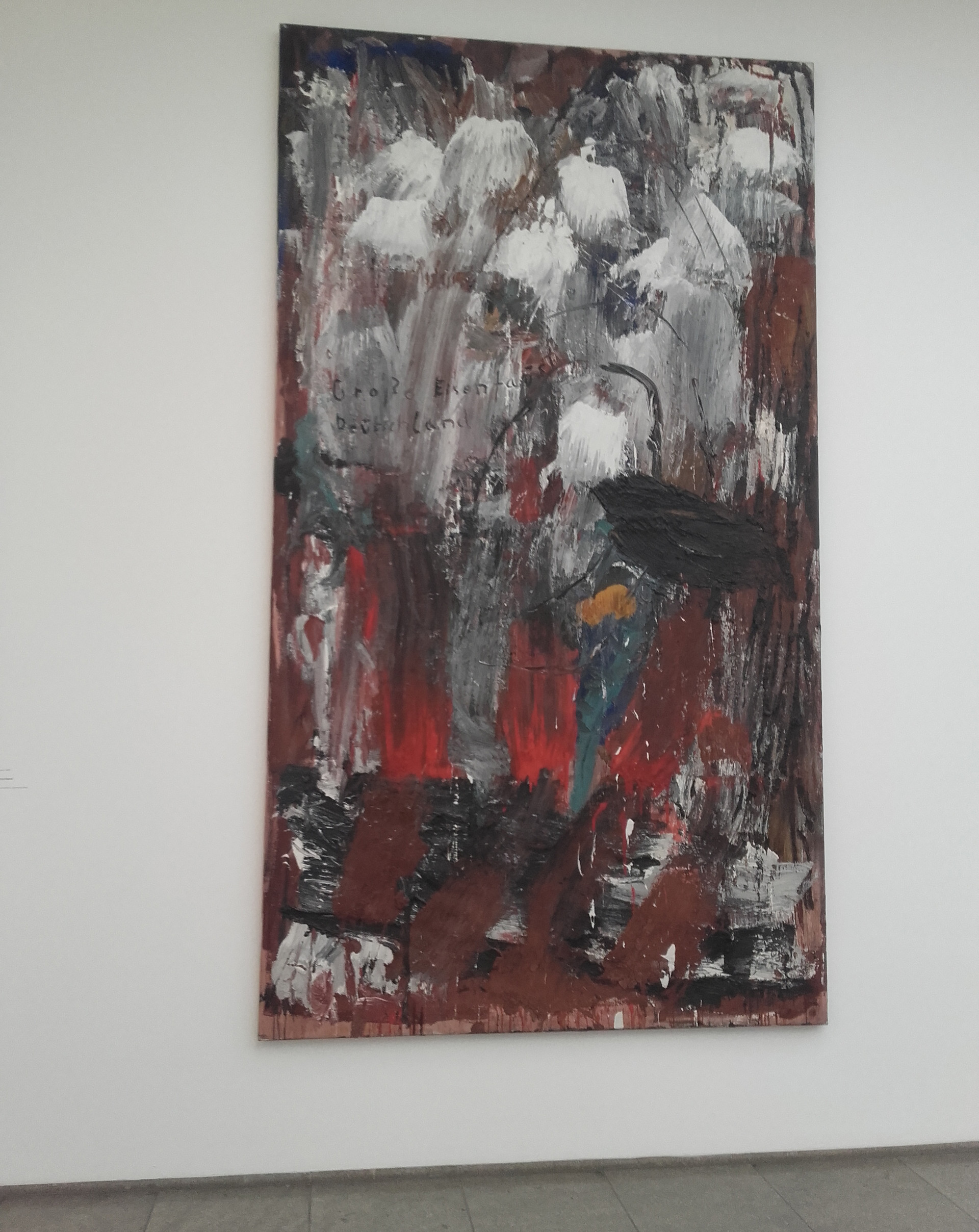
The main subjects that I recognized in Anselm Kiefer’s works had to do with the german history and he focuses especially on the dark past of his country, a fact that gives the large scale paintings a dramatic sensation. Besides the use of normal paint, Kiefer often applies various materials like straw, ash and clay giving the paintings a fragile appearance.
Robert Rauschenberg and the combine paintings
In the permanent collection of the museum I also saw for the first time some works of The American artist Robert Rauschenberg. His paintings were standing out due to the use of a technique called mixed media. The colorful compositions were created both by paint or various types of materials like old pieces of wood or fabric.
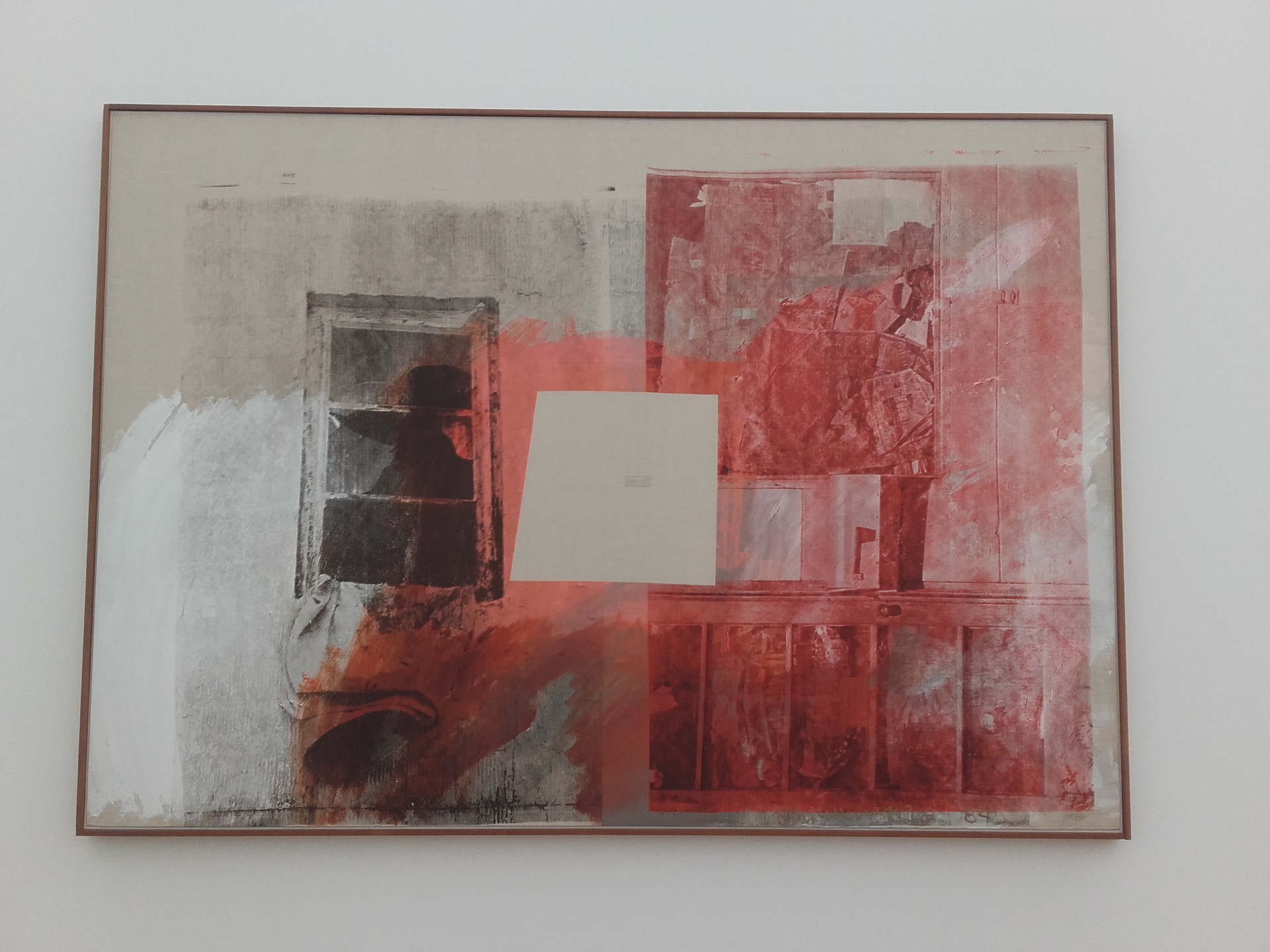
The utilization of such elements made me wonder even more about the meaning of each image. I questioned myself if Rauschenberg had applied all of these to create expression or symbols. Certainly, the texture created gave the paintings expressiveness.
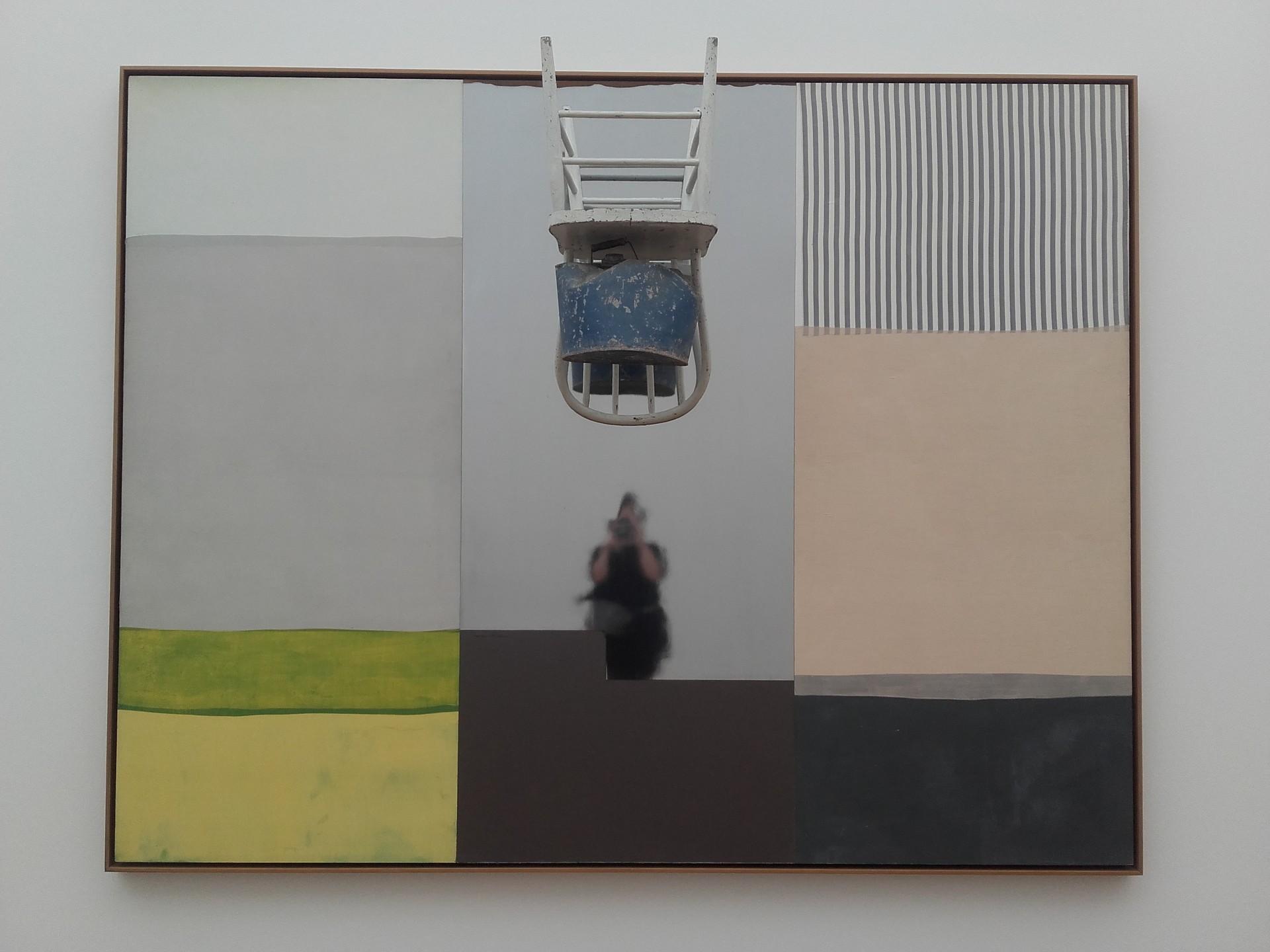
The integrated objects on the canvas’s surface were particularly used by Rauschenberg to create the so called “combine paintings”, hybrid compositions between paintings and sculpture. Other times, the paintings, drawings or prints were attached to the three dimensional objects, as in the image below in which on the ladder were put printed reproductions.
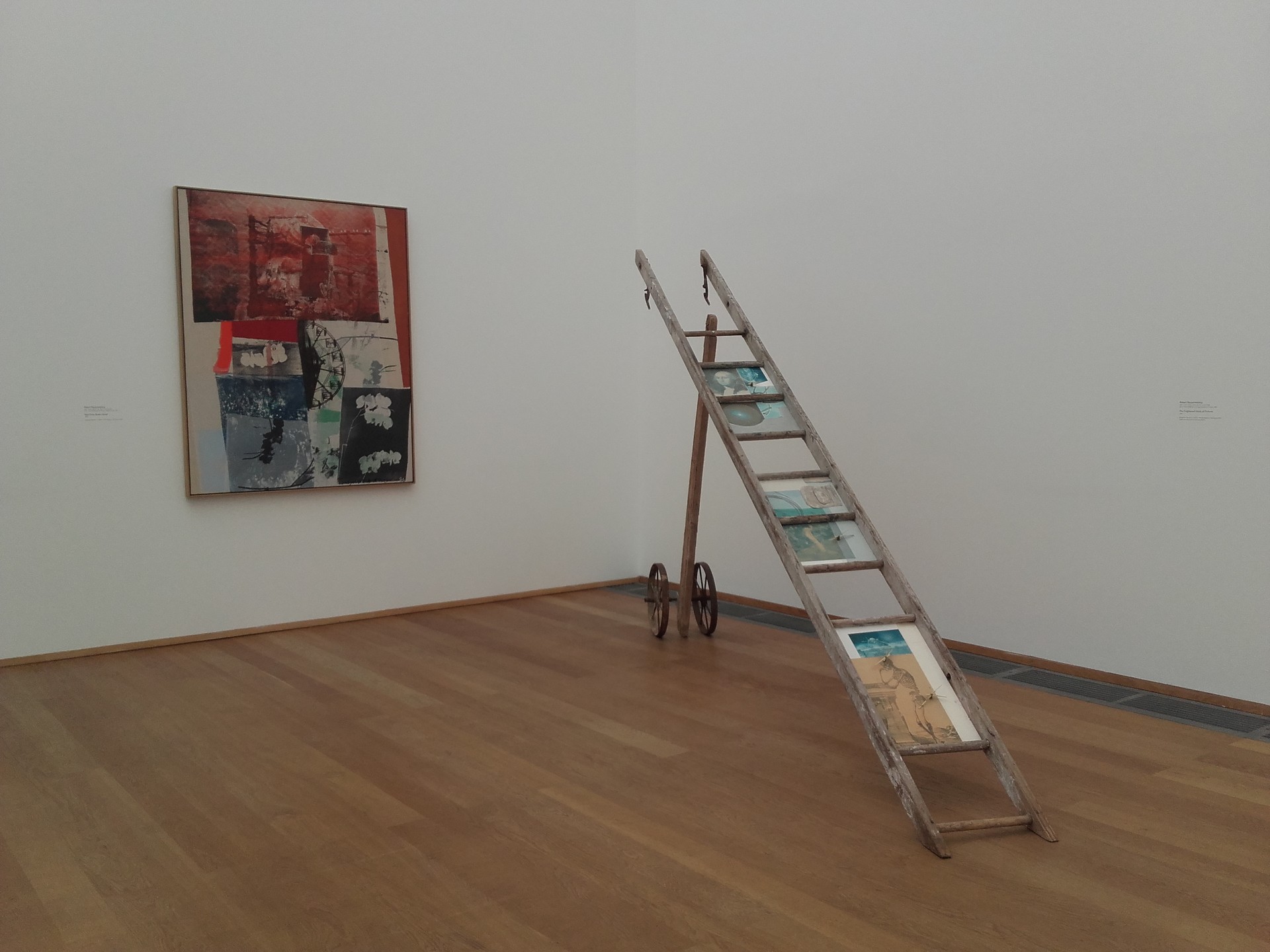
Inside Cy Twombly’s emotions
Cy Twombly was another American painter whom paintings I looked at on the museum’s walls. What I liked the most about was the playful nature of his artworks.
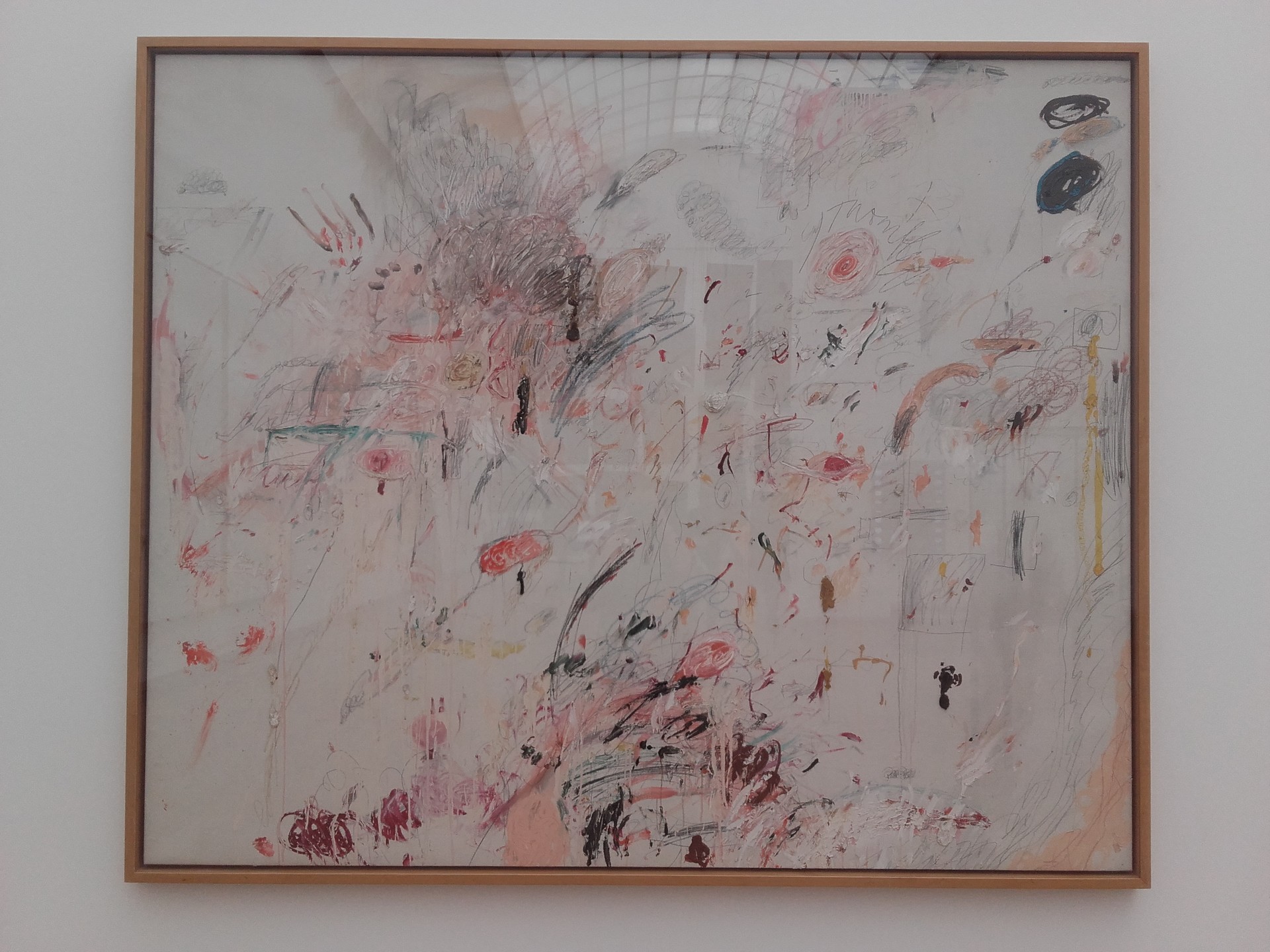
Staying in front of the images belonging to him was very relaxing and challenging at the same time. He didn’t depict anything, but he composed paintings only with the color and the gesture of his hand. The subject seemed to be the capturing and creation of pure abstract expression based on the present moment with all of its emotions and involvements.

The paintings had a sort of movement and pathos which made the attendance of the artist visible especially through the discernible brush strokes. All I could say was that Cy Twombly succeeded to convey me in his paintings and world and became since then one of my favorite abstract painters.
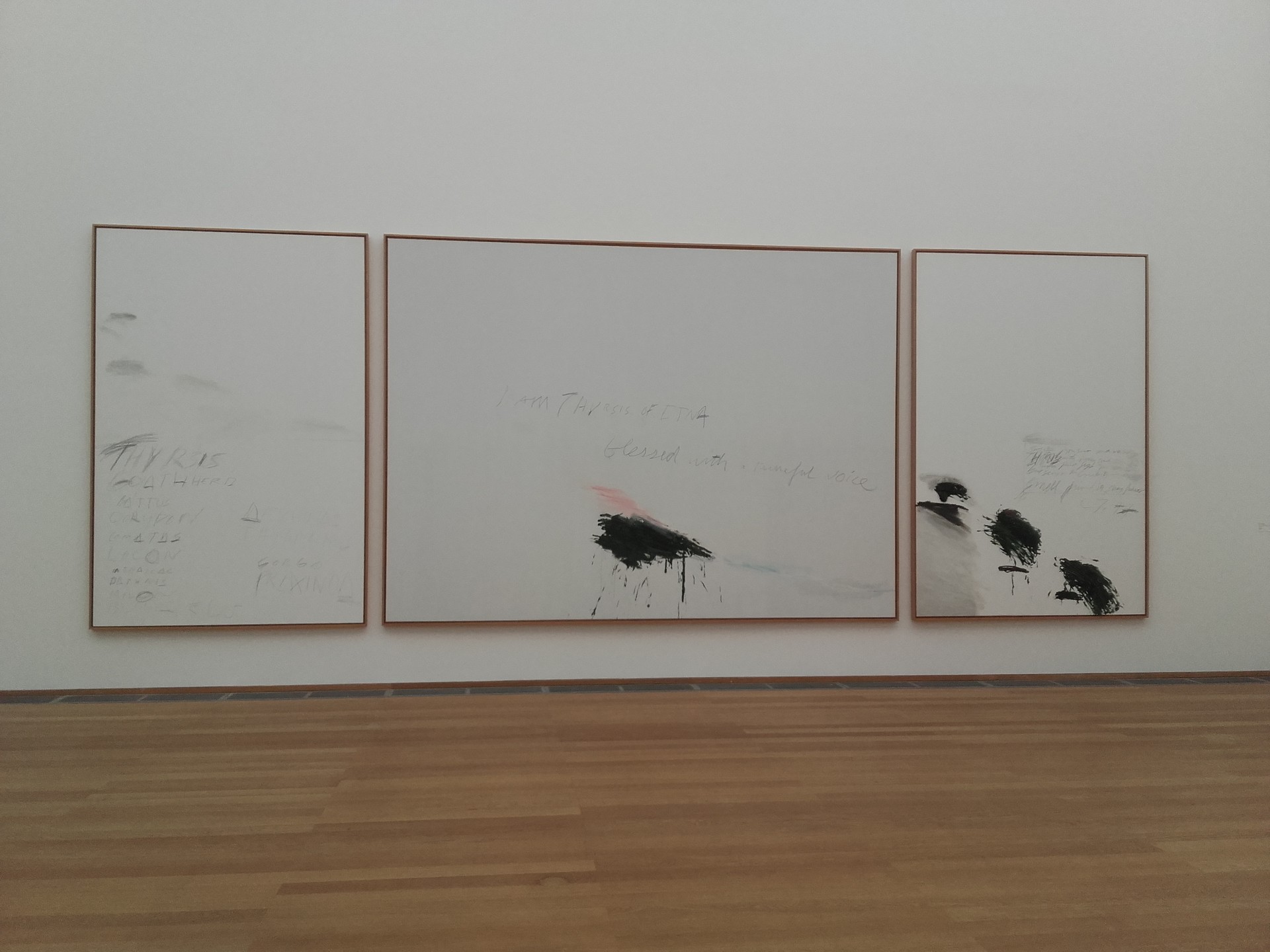
The Pop Art painters
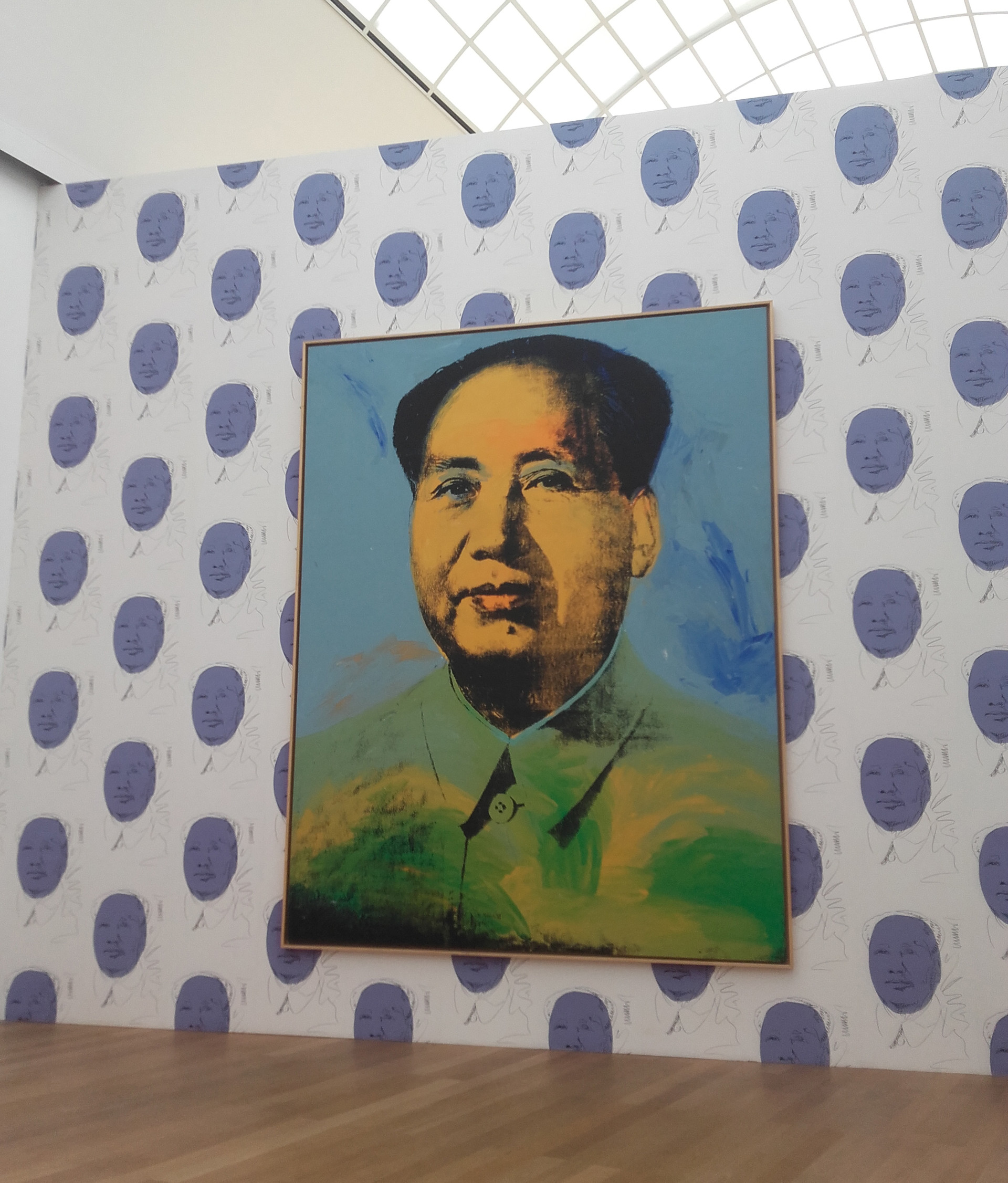

Among the permanent collection of the Museum für Gegenwart I found works created by renowned artists such as Andy Warhol and Roy Lichtenstein, the two most representative people of the Pop Art Movement whose paintings I didn’t preferred that much, but I appreciated its colorful elements and the not so common subject matter.
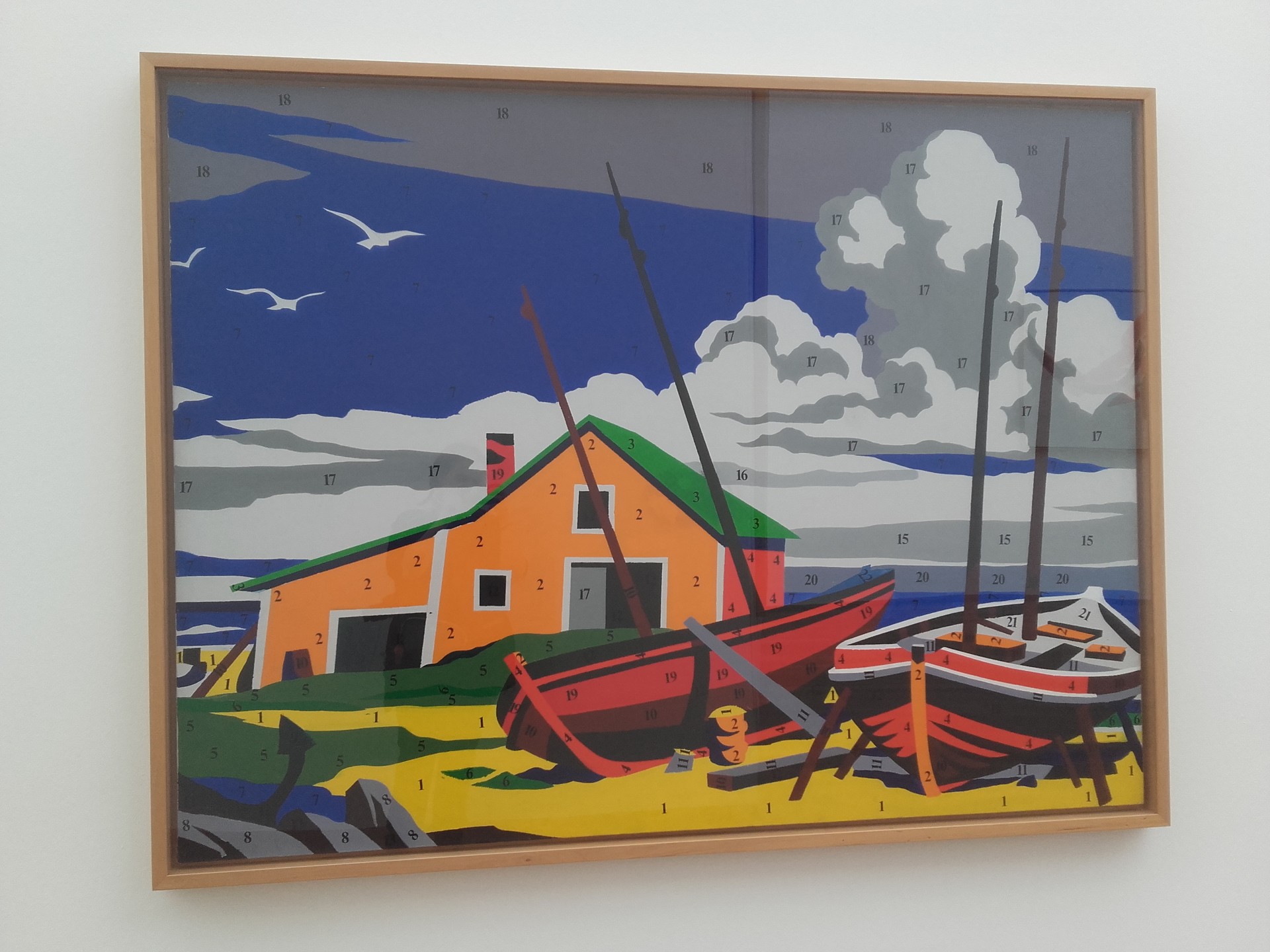
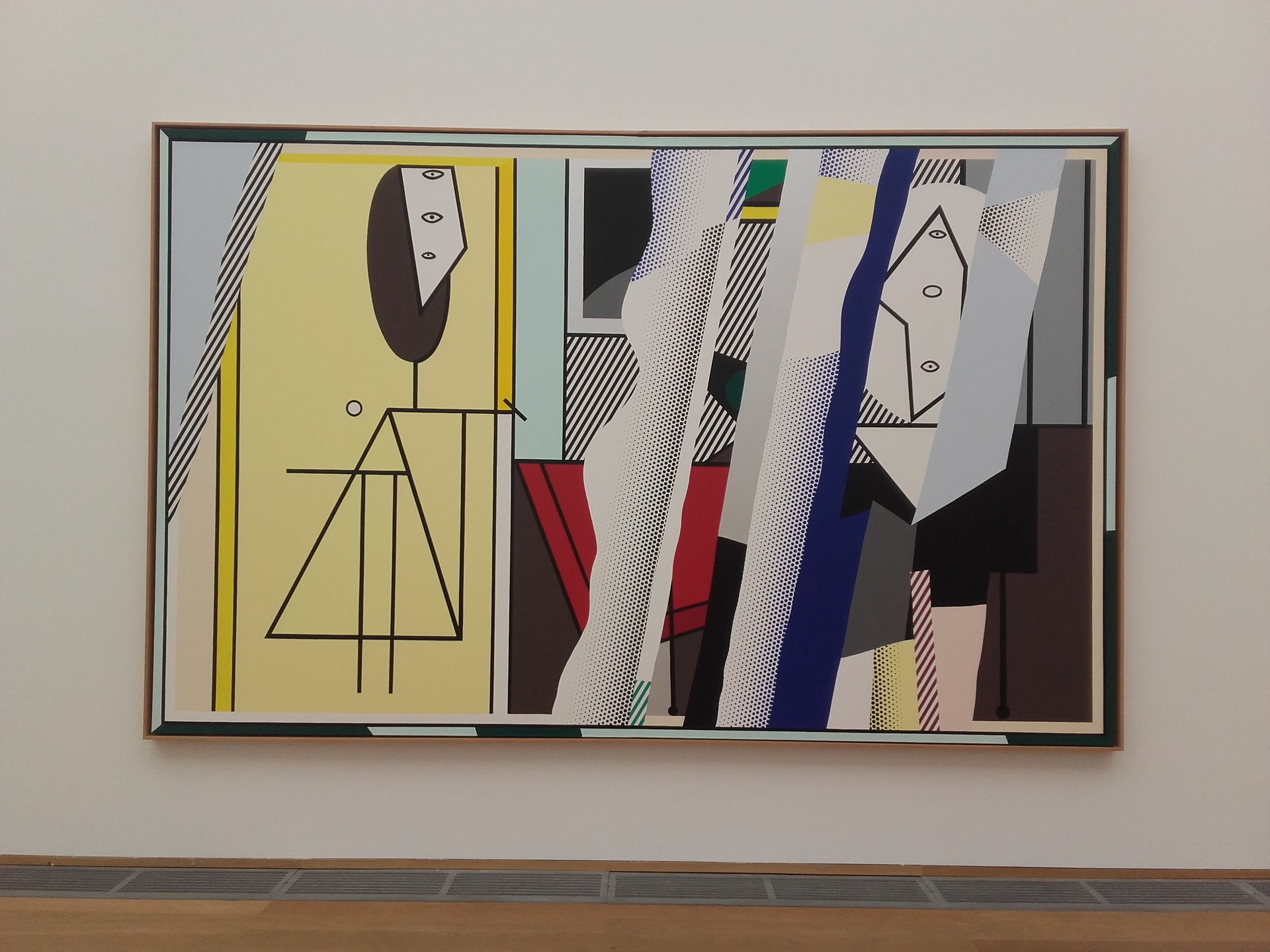
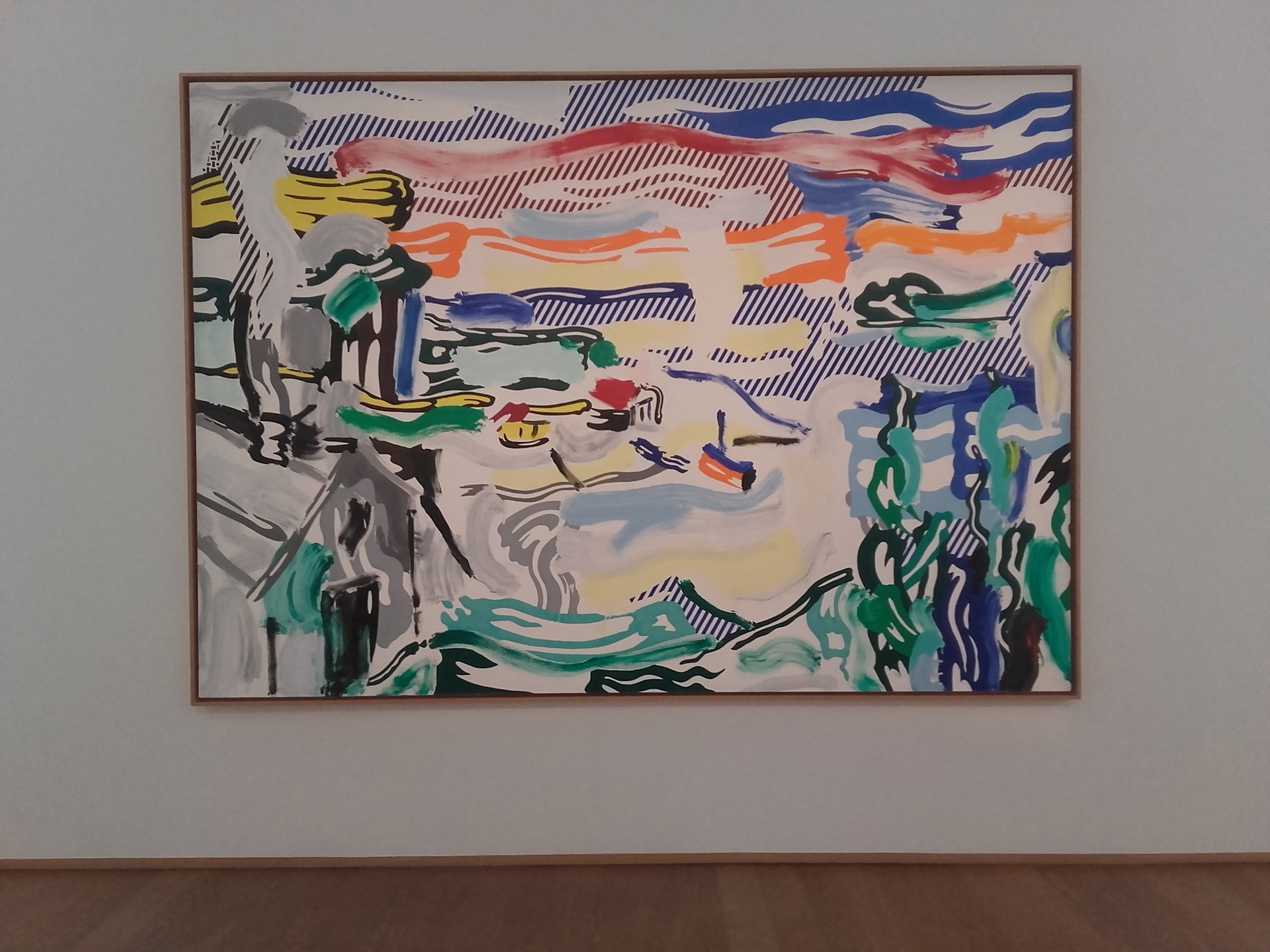
The joyful installations of Pipilotti Rist
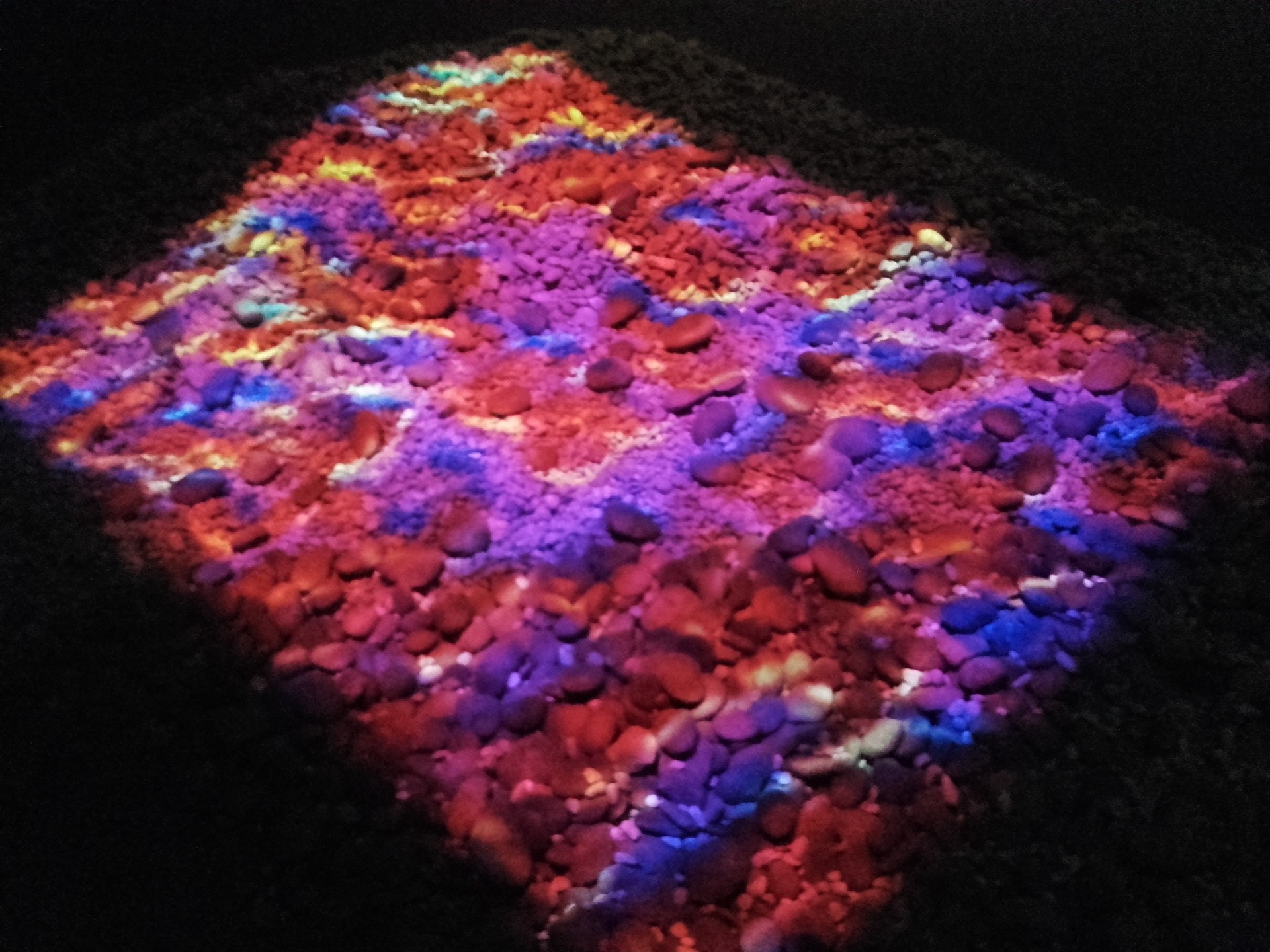
In one of the long halls I stumbled across a few interesting installations with rocks and light. I didn’t know at that time who was the author of the works. Whereas, the creative interventions where displayed on the floor, I really enjoyed walking through it many times in a row.
Later I discovered that the artist who put these together was Pipilotti Rist, a swiss visual artist known especially for video art in which she focuses on subjects related with the human body.
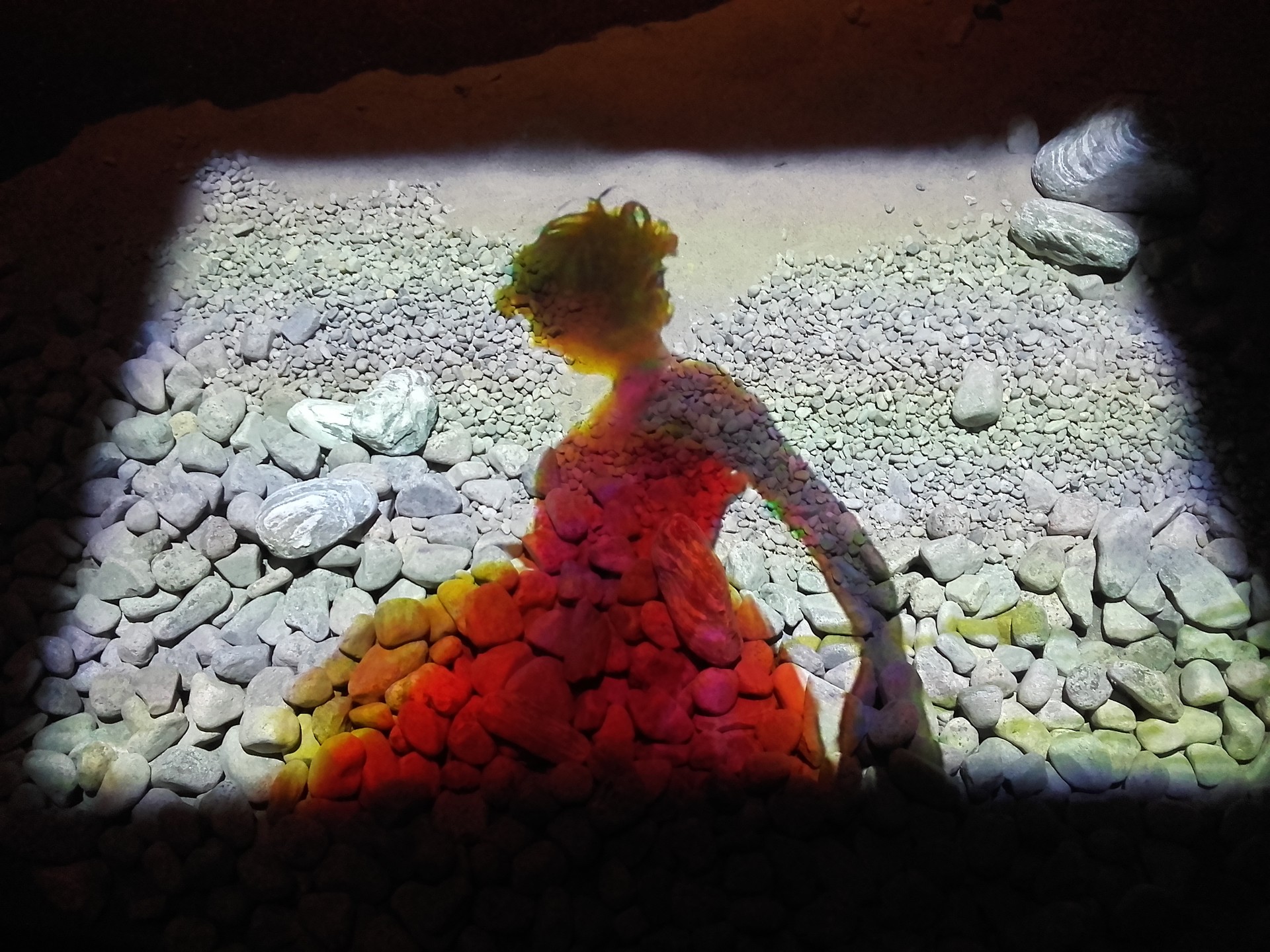
Regarding to the artworks presented in the museum, the images developed by Pipilotti were looking like some landscapes due to the use of raw natural materials like rocks that were animated by colorful videos in each a women was either dancing or there were only projected games of colorful light inspired by the movements of the water. Indeed, watching these the feeling that I got was of sunny relaxing day near a beach or a river.
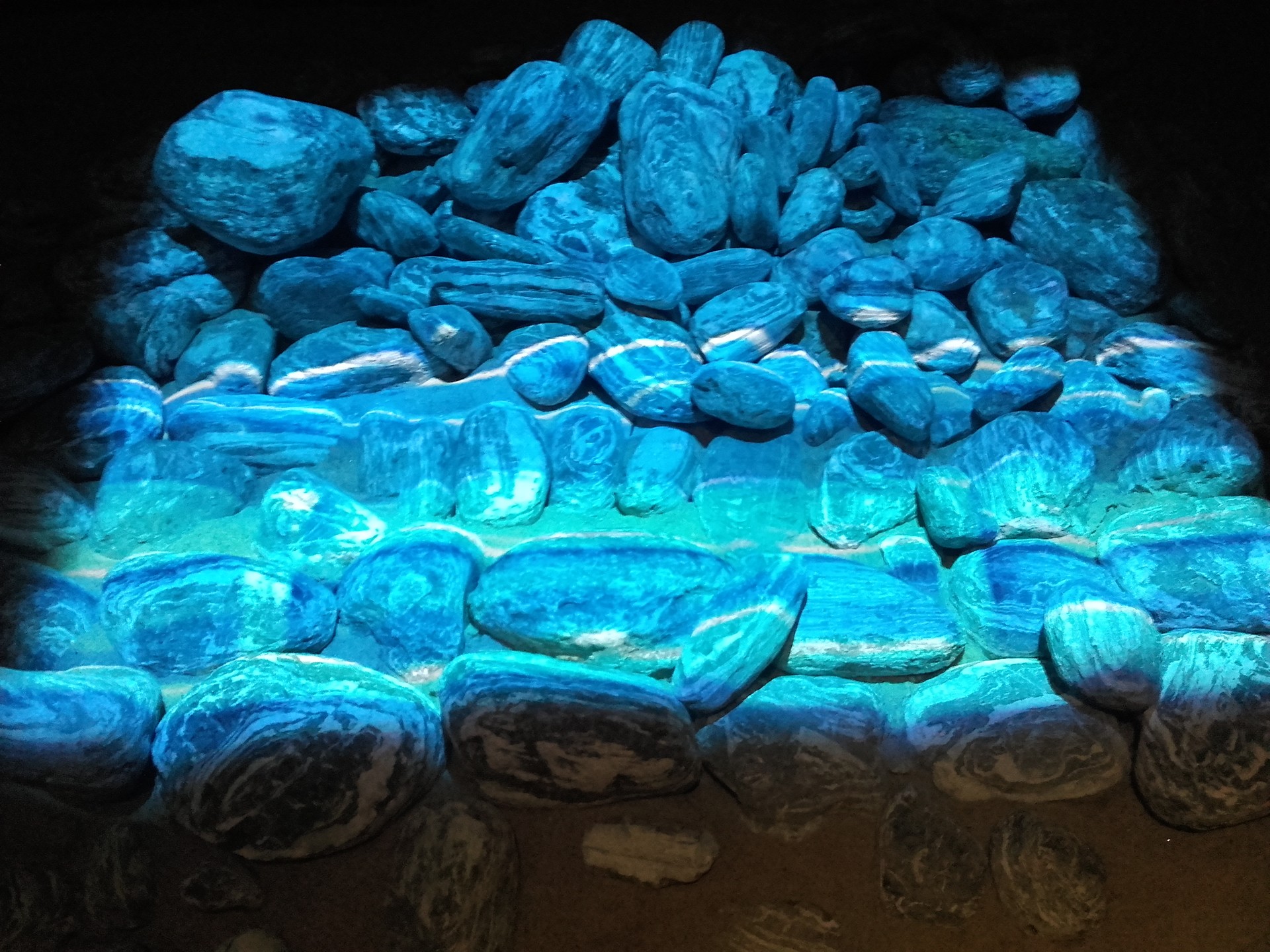
The end of the day and a disappointing situation
There were many other works that I got to experience in this museum, but about the ones mentioned above I can remember the most probably because these interacted much better with my condition since then. After I finished visiting all the exhibitions I got out in the museum’s yard and sat on a bench to rest my feet.
I got pretty tired at that time in the day, but after a 10 to 15 minute break I started walking again because I wanted to attend “The Plan B” Gallery, an exhibition space created by two Romanian artists, one of them being Adrian Ghenie, the most successful Romanian artist of my time and one of my favourite painters.
I was extremely unlucky that day because the gallery was completely closed due to a future installation of an upcoming solo exhibition of Adrian Ghenie.
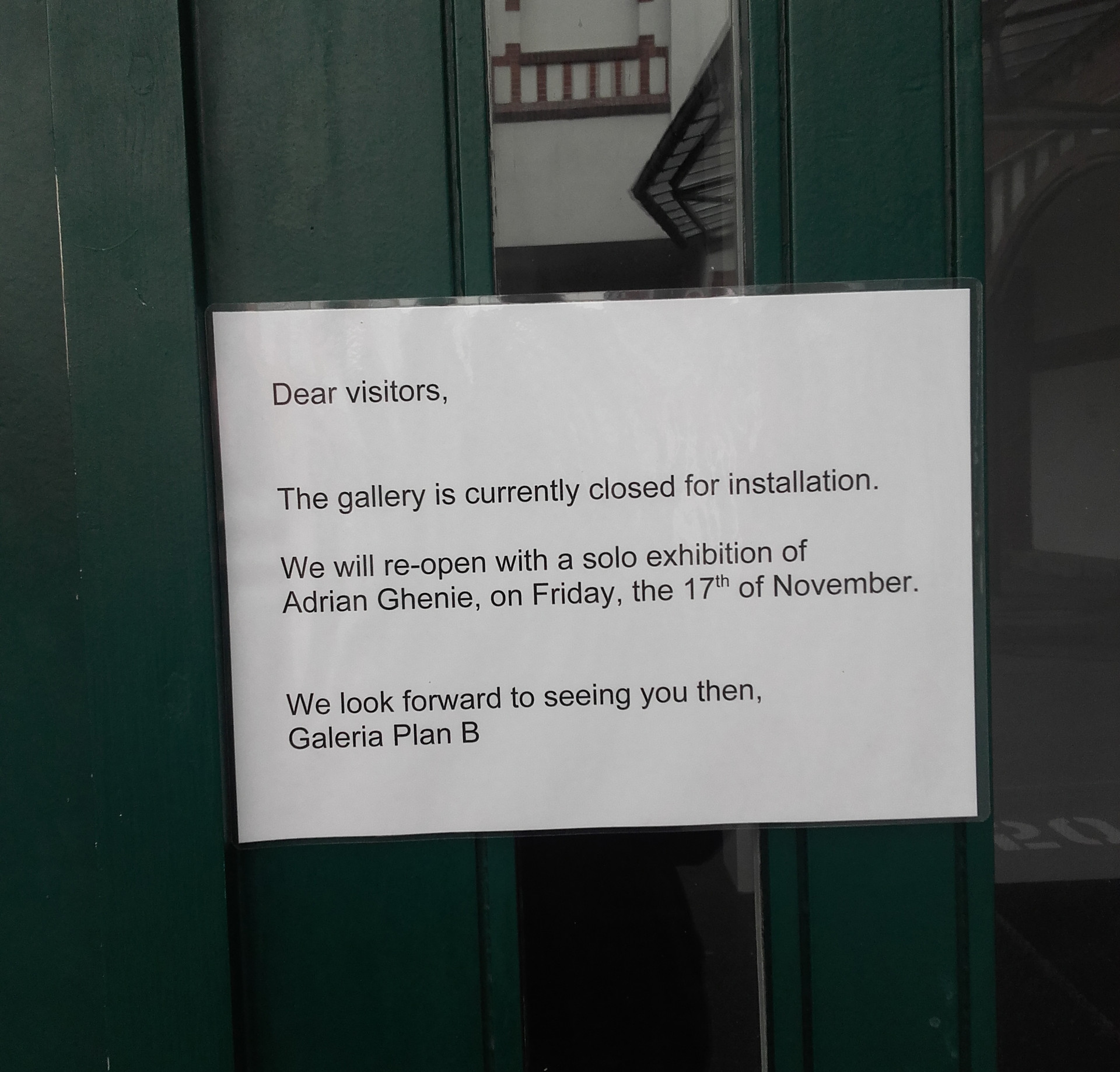
I got a little bit upset and disappointed by the situation but there was nothing that I could do. Surrounding “Plan B” were other art galleries and since I was already there I decided to enter in some if it and I didn’t regret the decision because I got to see a few interesting and beautiful works.
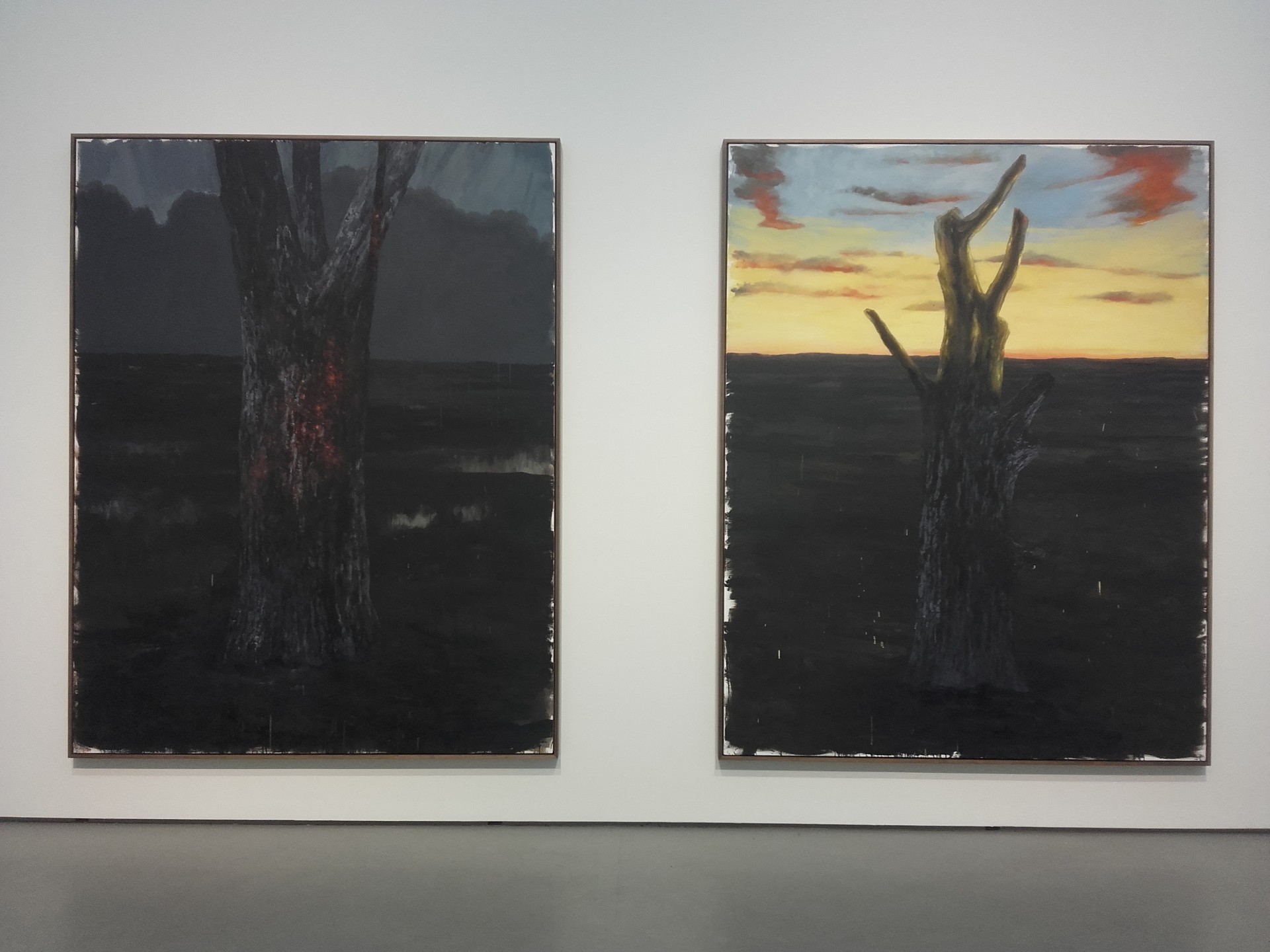
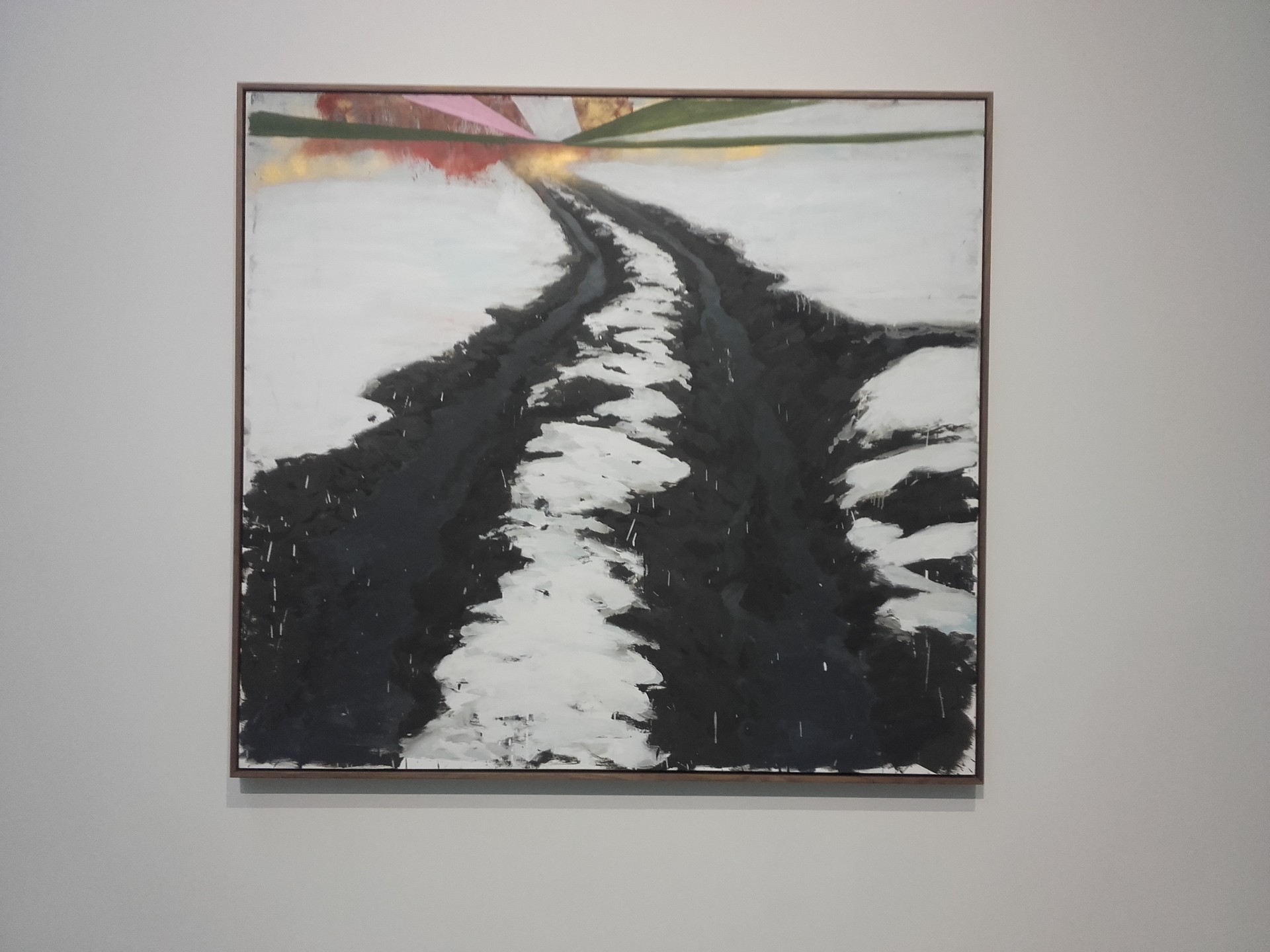
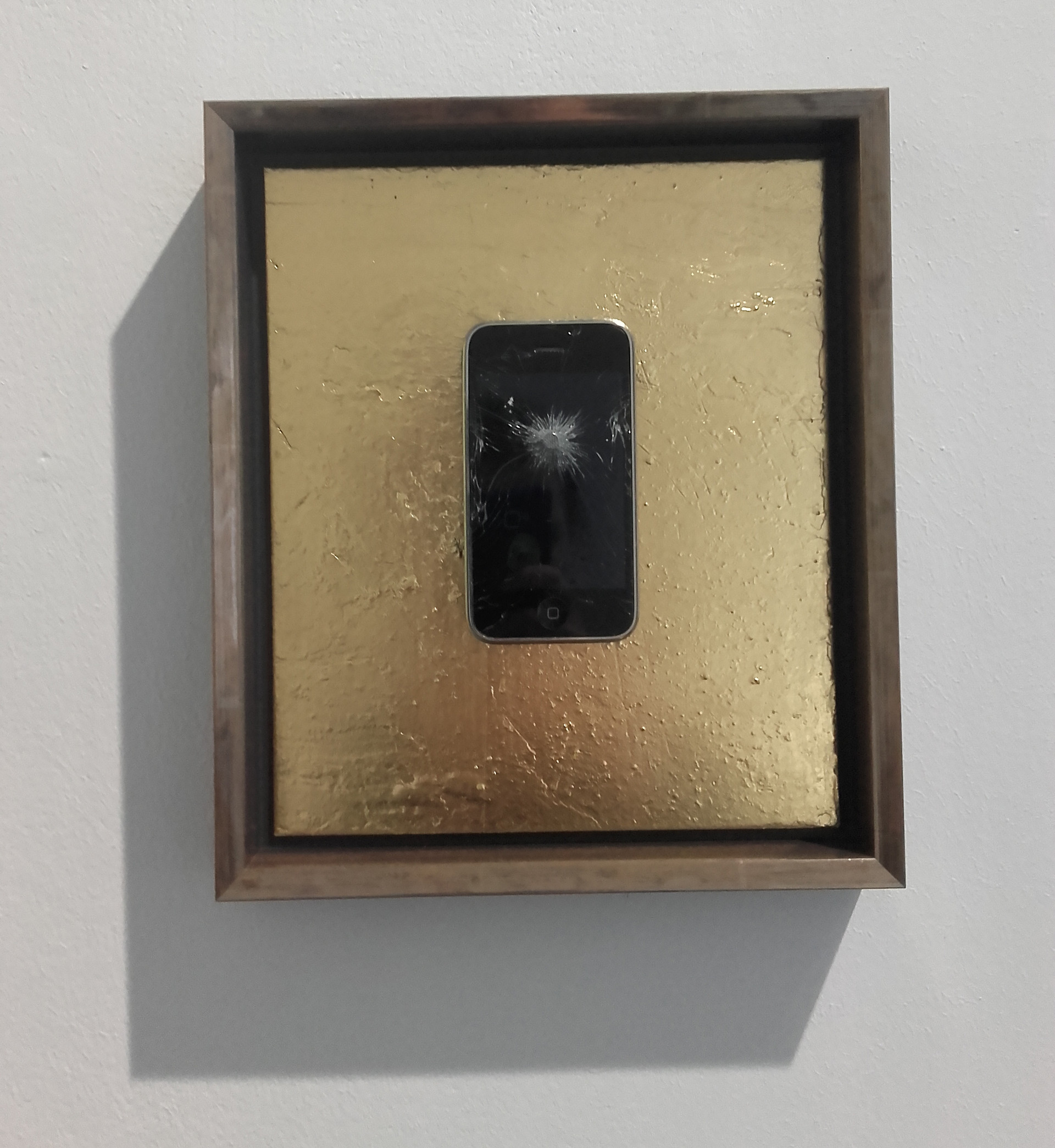
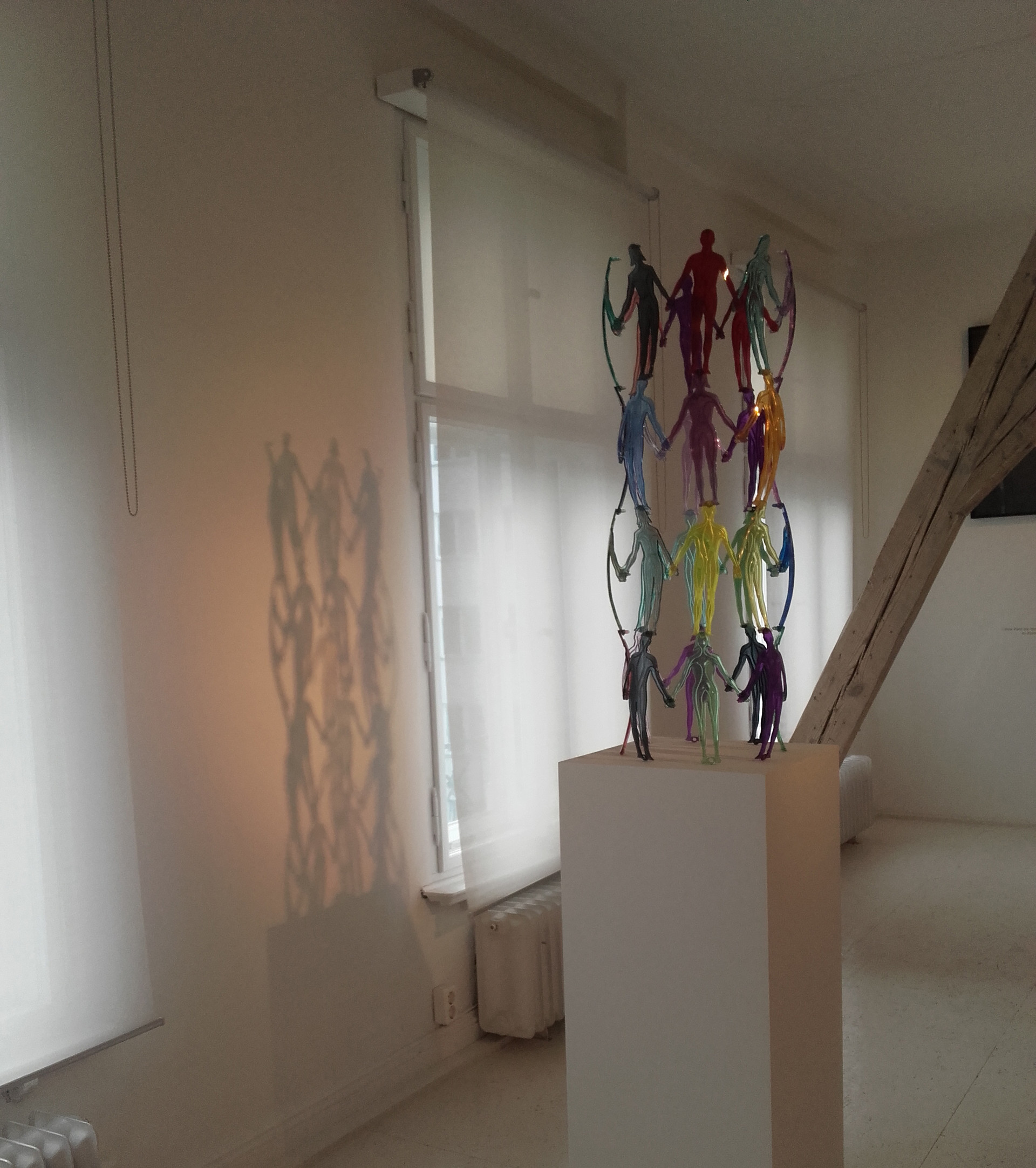
Going back to Szczecin
The night came and there was the time to return to the bus station. I chose to walk again instead of taking any mean of transportation even if I was located very far from ZOB. After 15 minutes of going by foot I began to be more than exhausted and I had to take repeated breaks make it till the end.

It was a full day of strolling around Berlin that ended with very sore feet and lots of amazing seen things. I was very happy to finally sit down in the bus. The route on which the FlixBus drove on this time was different then in the morning. The bus passed more through the city and I got to see the Alexanderplatz and also the other great landmark of the german capital, more exactly the Television Tower (The Fernsehturm). I felt lucky but still tired. I slept all the way back to Szczecin.
Photo gallery
Content available in other languages
Share your Erasmus Experience in Berlin!
If you know Berlin as native, traveler or as exchange student... share your opinion on Berlin! Rate different characteristics and share your experience.
Add experience →












































Comments (0 comments)